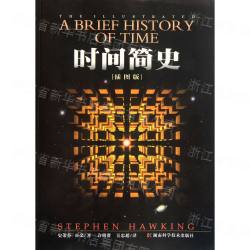-
内容大纲
《功能语法入门》自问世以来,畅销多年,已两次再版。在第三版中,作者继续以通俗易懂的语言阐释系统功能语言学,分析功能语法模型,并更正了之前的不当理解和术语解释。本书是了解HaⅢday系统功能语法的首选入门书籍。 -
作者介绍
-
目录
Foreword
Acknowledgements
1 The purposes of linguistic analysis
1.1 Starting points
1.1.1 Going in through form
1.1.2 Going in through meaning
1.2 Language, context and function: a preliminary exploration Exercise
2 Identifying clauses and clause constituents
2.1 Breaking up the sentence - and labelling the parts
2.1.1 Recognizing constituents
2.1.2 Structural and functional labels
2.2 Ranks
Exercises
3 An overview of Functional Grammar
3.1 Three kinds of meaning
3.1.1 The three metafunctions
3.1.2 Three kinds of function in the clause
3.1.3 Three kinds of structure in the clause
3.1.4 Showing the options: systems networks
3.1.5 A fourth metafunction
3.2 Register and genre
3.2.1 Register (and the corpus)
3.2.2 Genre
Exercises
4 Interacting: the interpersonal metafunction
4.1 Introduction
4.2 Roles of addressers and audience
4.3 Mood
4.3.1 The structure of the Mood
4.3.2 Identifying Subject and Finite
4.3.3 Meanings of Subject and Finite
4.3.4 Mood in non-declarative clauses
4.3.5 Mood in text
4.3.6 The Residue
4.3.7 Modal Adjuncts
4.4 Modality
4.4.1 Modality and polarity
4.4.2 Types ofmodality
4.4.3 Modal commitment
4.4.4 Modal responsibility
4.4.5 Modality in text
4.5 Appraisal
4.6 Interaction and negotiation
4.7 Interaction through text
Exercises
5 Representing the world: the experiential metafunction
5.1 Introduction
5.2 Transitivity: processes and participants
5.2.1 Material processes
5.2.2 Mental processes
5.2.3 Relational processes
5.2.4 Verbal processes
5.2.5 Other types of processes
5.2.6 Other participant roles
5.2.7 Circumstances
5.2.8 Transitivity in text
5.3 More complex aspects of transitivity
5.3.1 More on material processes
5.3.2 More on mental processes
5.3.3 More on relational processes
5.3.4 Processes in verbal group complexes
5.3.5 Participants in causation
5.4 Transitivity patterns in text
5.4.1 Analysing transitivity in clauses and in text
5.4.2 Comparing transitivity choices in different registers
5.5 Ergativity
Exercises
6 Organizing the message: the textual metafunction-Theme
6.1 Introduction: making messages fit together
6.2 Theme
6.3 Identifying Theme
6.3.1 Theme in declarative clauses
6.3.2 Theme in non-declarative clauses
6.4 Special thematic structures
6.4.1 Thematic equatives
6.4.2 Predicated Theme
6.4.3 Thematized comment
6.4.4 Preposed Theme
6.4.5 Passive clauses and Theme
6.5 Theme in clause complexes
6.6 Multiple Theme
6.6.1 Conjunctions in Theme
6.6.2 Conjunctive and modal Adjuncts in Theme
6.6.3 Textual, interpersonal and experiential elements in Theme
6.6.4 Interrogatives as multiple Themes
6.7 Some issues in Theme analysis
6.7.1 Existential 'there' in Theme
6.7.2 Interpolations in Theme
6.7.3 Preposed attributives
6.7.4 Theme in reported clauses
6.7.5 Theme and interpersonal grammatical metaphor
6.8 Theme in text
6.8.1 An illustration of Theme in text
6.8.2 Other ways of exploring thematic choices
6.8.3 Theme in different registers
6.9 A final note on identifying Theme
Exercises
7 Clauses in combination
7.1 Introduction
7.2 Units of analysis
7.3 Types of relations between clauses
7.3.1 Logical dependency relations
7.3.2 Logico-semantic relations
7.4 Expansion
7.4.1 Elaborating
7.4.2 Extending
7.4.3 Enhancing
7.4.4 Internal and external expansion
7.5 Projection
7.5.1 Quotes and reports
7.5.2 Facts
7.5.3 Projection in text
7.6 Clause complexing
7.6.1 An overview
7.6.2 Clause complexing and register
Exercises
8 Organizing the message: the textual metafunction-cohesion
8.1 Cohesion and coherence
8.2 Reference and ellipsis
8.2.1 Reference
8.2.2 Ellipsis
8.3 Conjunction
8.4 Cohesion and register
Exercises
9 Grammatical metaphor
9.1 Introduction
9.2 Grammatical metaphor
9.3 Experiential and logical metaphors
9.4 Interpersonal metaphors
9.5 Textual metaphor
9.6 A cautionary note
Exercises
10 Implications and applications of Functional Grammar
10.1 Three-dimensional analysis of texts
10.2 A summary review of Functional Grammar
10.3 Using Functional Grammar
10.4 Closing
Answers to exercises
Further reading
References
Index
同类热销排行榜
- 目送/人生三书
-
 21世纪的《背影》 + 感人至深的“生死笔记”+ 龙应台亲手摄影 + 跨三代共读的人生之书!
华人世界率性犀利的一枝笔,龙应台独家...
21世纪的《背影》 + 感人至深的“生死笔记”+ 龙应台亲手摄影 + 跨三代共读的人生之书!
华人世界率性犀利的一枝笔,龙应台独家...
- 顾城的诗(金版)(精)/蓝星诗库
- 人类群星闪耀时(插图本)/译林名著精选
- 牛津高阶英汉双解词典(附光盘第8版)(精)
- 文化苦旅(新版)
- 摆渡人
- 解忧杂货店(精)
- 骆驼祥子
- 曾国藩(又笨又慢平天下)
- 查令十字街84号(珍藏版)(精)
推荐书目
-

孩子你慢慢来/人生三书 华人世界率性犀利的一枝笔,龙应台独家授权《孩子你慢慢来》20周年经典新版。她的《...
-

时间简史(插图版) 相对论、黑洞、弯曲空间……这些词给我们的感觉是艰深、晦涩、难以理解而且与我们的...
-

本质(精) 改革开放40年,恰如一部四部曲的年代大戏。技术突变、产品迭代、产业升级、资本对接...

 [
[
